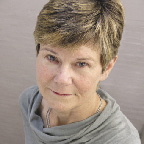The demands for sustainability on our larger projects are now coming from developers seeking to enhance not only the quality (and approvability) of their projects, but also of their corporate identity. This is new. While Towers|Golde has always been "green", many of today's clients and communities have encouraged us to implement more far-reaching strategies for sustainable development in stewardship of the land and its resources, preservation and enhancement of local character, limiting the carbon footprints of specified materials, and requiring best management practices during the construction period.
The majority of our current projects are seeking LEED certification/certifiability. This is the U.S. Green Building Council's Leadership in Energy and Environmental Design's Rating System for measuring the implementation of sustainable green building and development practices; however, we are especially excited by the inclusion of two projects into the Pilot LEED for Neighborhood Development program that "promotes the principles of smart growth, urbanism and green building into the first national standard for neighborhood design". Inherent in this approach is the promotion of public health issues as well as the protection of the environment. One of these is here in Connecticut: the 60 acre, mixed-use River Oaks project in Simsbury, where we have collaborated with a dedicated team to create a pedestrian-oriented community, incorporate traffic calming elements, implement water infiltration strategies (like vegetated swales and rain gardens), and make connections, both physical and visual, to the surrounding landscape. The sustainability of the project will be critical to its ultimate public approval.
The other is New Songdo City, a $25 billion, 1,500 acre completely new city being developed in South Korea as an International Business District with housing for 65,000 and employment for 300,000. Towers|Golde was the landscape architect on the master planning team which based its designs on sustainable principles from the start. USGBC says that the Songdo International Business District "will play a pioneering role in helping to set [the] standard for sustainable urban planning and smart growth based on criteria such as density, proximity to transit, environmental preservation, mixed housing type, and pedestrian-friendly design." Obviously, the developers think it will make the project a financial success as well. In addition to the overall planning, we were the conceptual designers for the signature, 120 acre Central Park. We based its design on the legacy of the Korean cultural landscape as well as a cross-section of ecotypes found throughout the peninsula. It was, for us, an exciting opportunity to explore the underlying principles of incorporating indigenous design and materials, a less well publicized aspect of sustainability, but one which was particularly important in New Songdo where it was important to make the 'new', familiar... and saleable.
Increasingly, our institutional clients are asking for green designs, not only academic institutions which have been at the forefront of the movement, but also healthcare clients who understand the "wellness" factor of sustainability (and local identity). Especially at clinic and hospital complexes, roof-decks offer both physical opportunities for healing gardens that are accessible and private for a range of patient needs as well as visual relief for entire hospital populations, a well-documented contributor to reduced recovery times as well as increased staff satisfaction/retention. On some of our larger institutional projects we have also worked with interdisciplinary teams to develop far more comprehensive storm water management approaches such as the recent creation of an extensive system of new storm water treatment wetlands at the Dartmouth Hitchcock Medical Center in New Hampshire.
In our campus planning and on smaller educational projects, storm water management practices have become important "teaching" opportunities for some of our clients and have been made, at their request, important and highly visible elements of the design scheme for that reason. For example, at Bucknell University in Pennsylvania, where we are currently completing a master plan, an existing channelized creek will be reconfigured with basins, weirs, wetlands and riparian vegetation as the sustainable centerpiece of the design of the entry sequence to campus and a very public statement of the institution's commitment to environmental stewardship.
In a time of increasing awareness of shrinking resources, global sprawl, and recessionary dollars, we certainly expect the issue of sustainability to be one of the most important criteria applied to all of Towers|Golde's future designs, but especially to our larger work where it can have the greatest impact... on the environment as well as on public perception/approval.
Shavaun Towers, FASLA, is a principal with Towers Golde, LLC, New Haven, Conn.
Tags:
How does today's concern for sustainable design impact your large-scale projects?
March 06, 2008 - Connecticut









